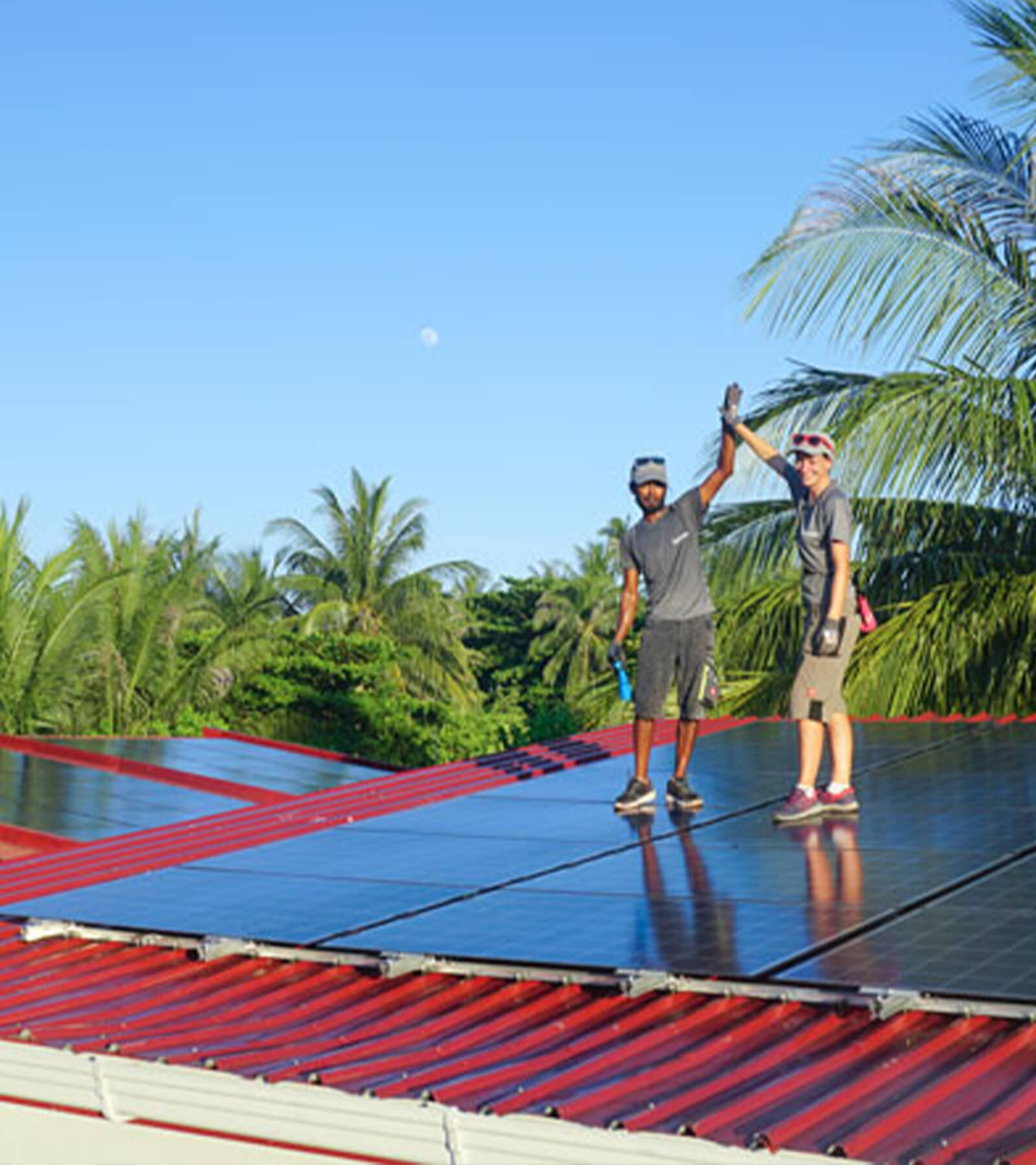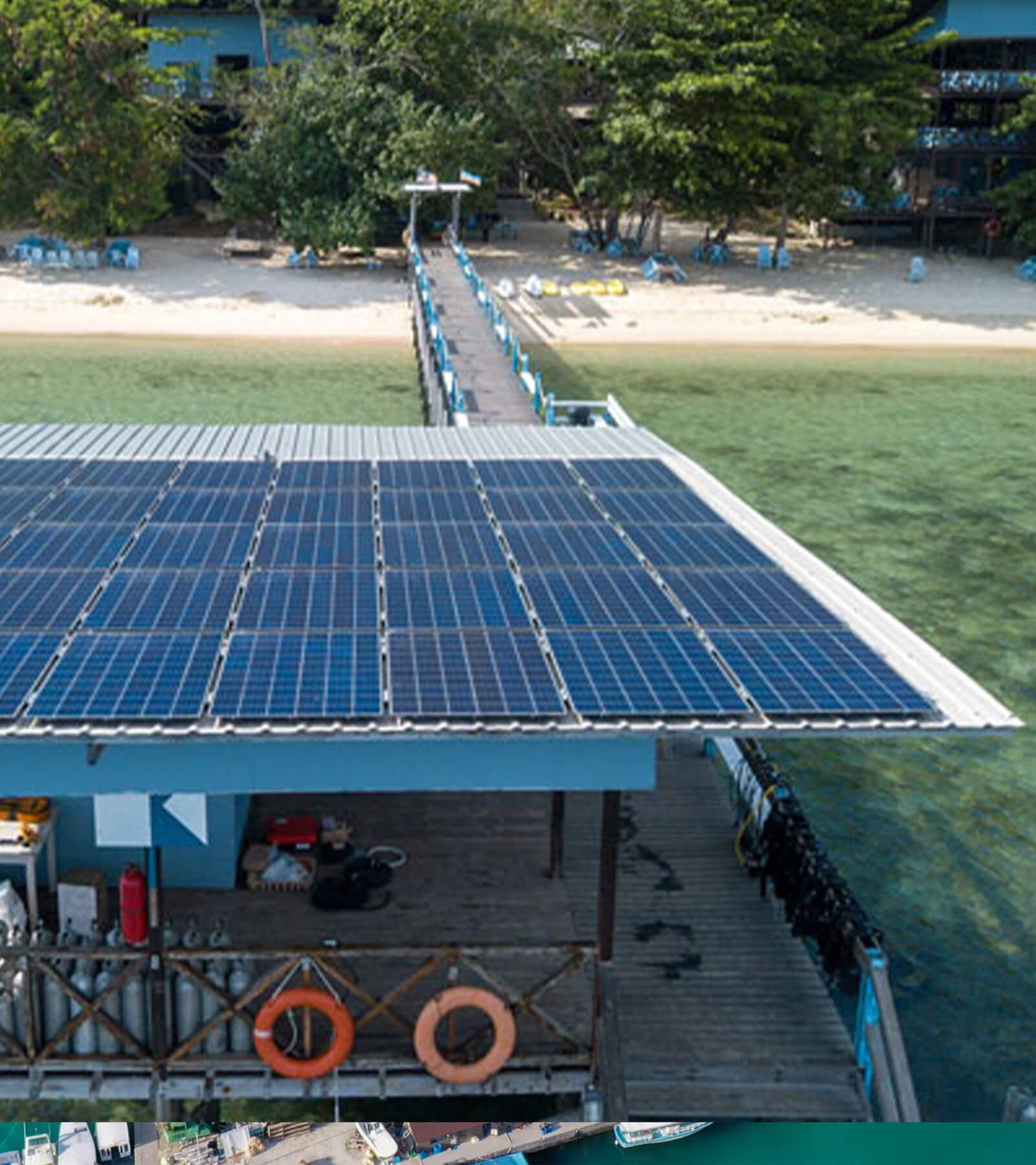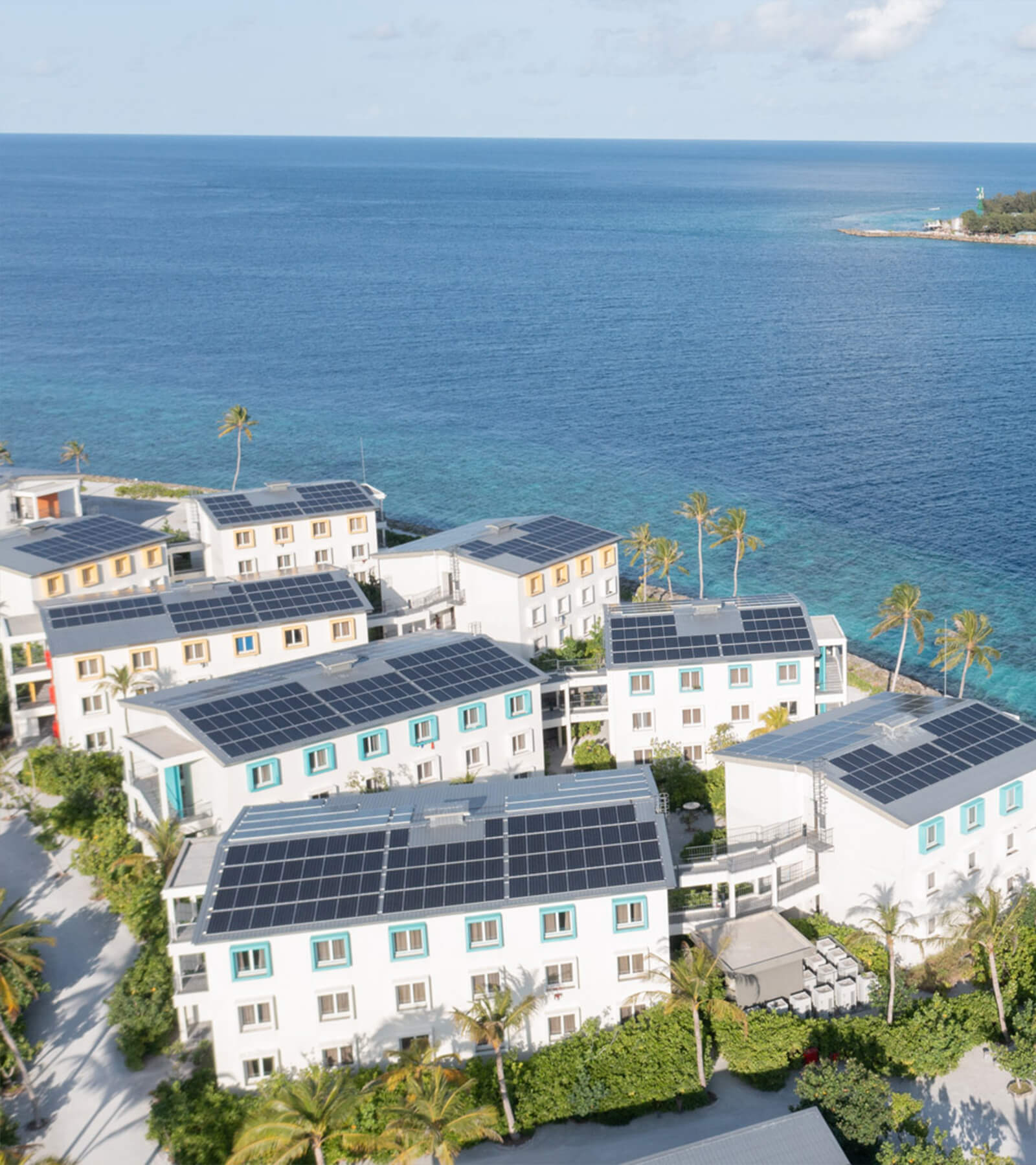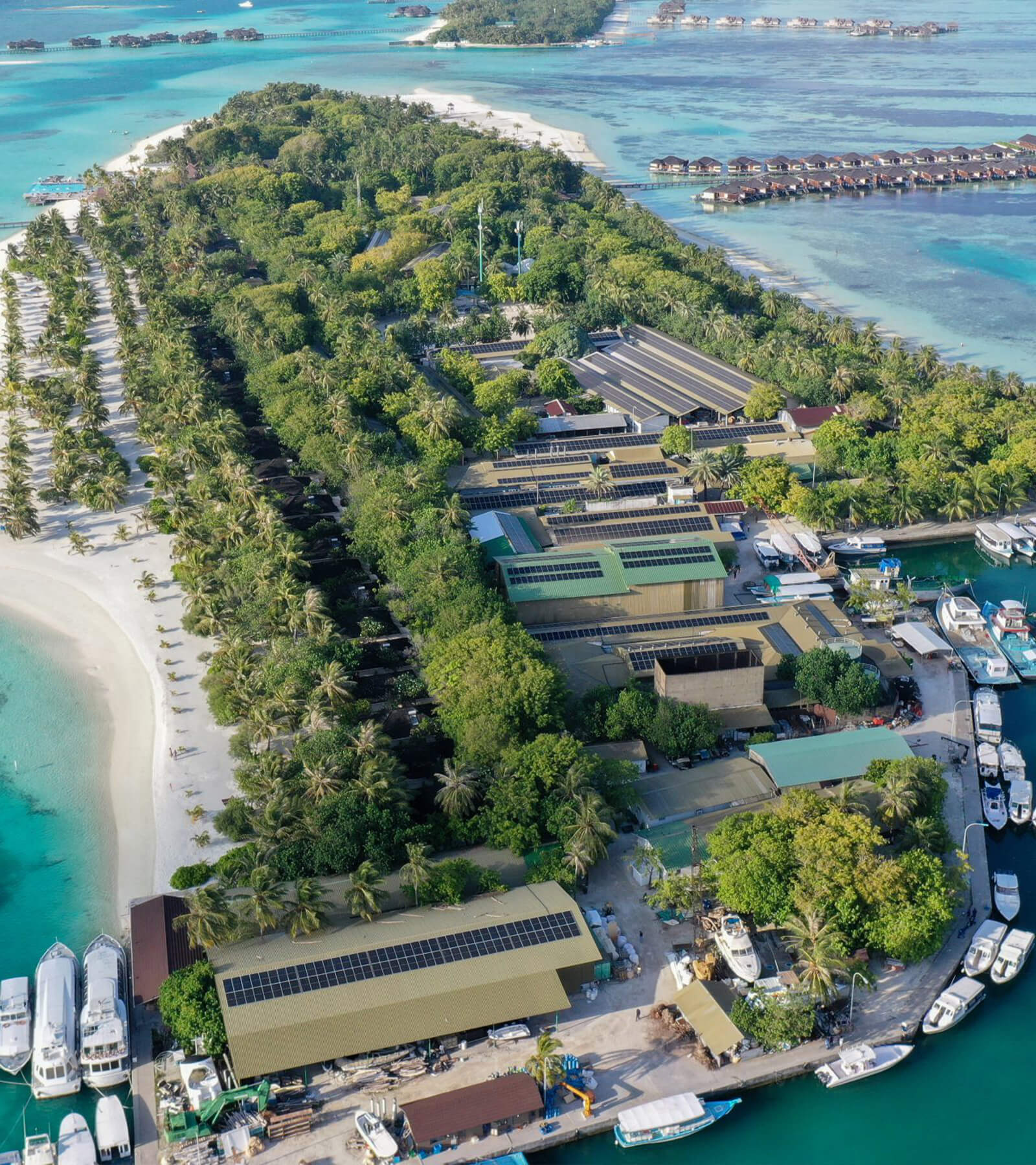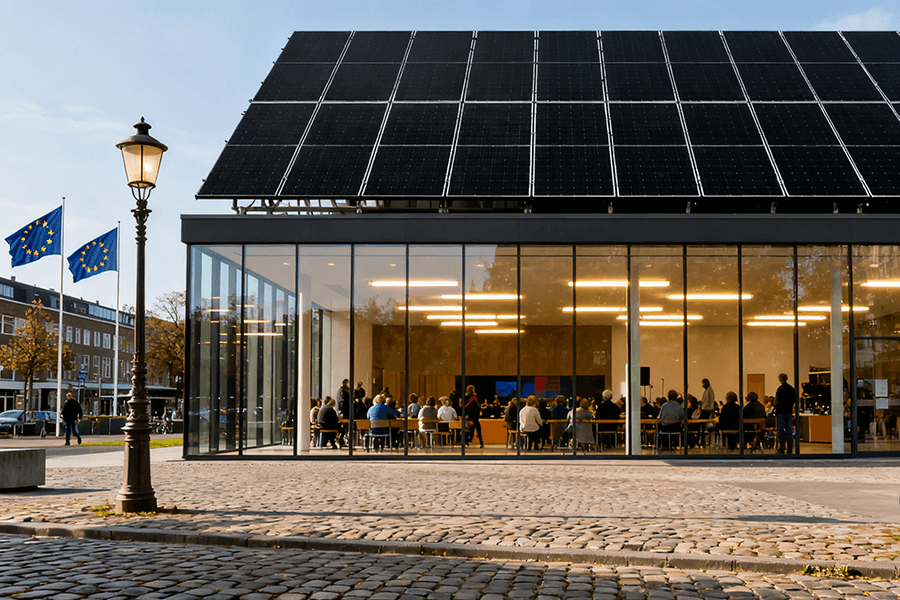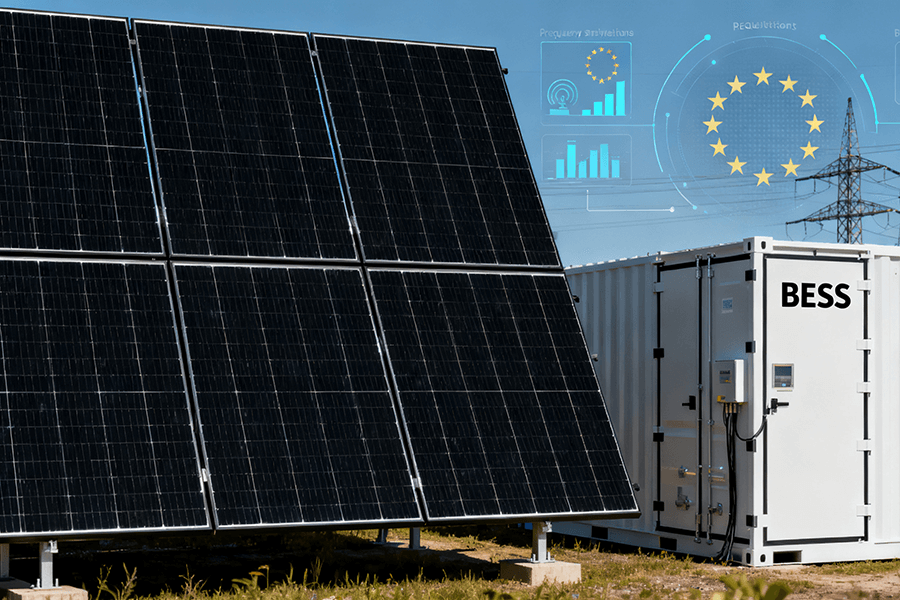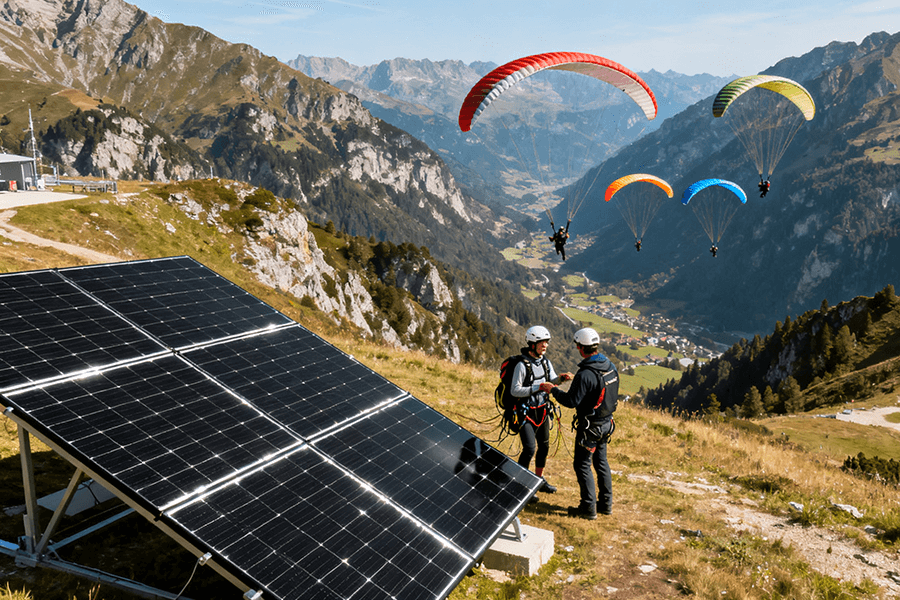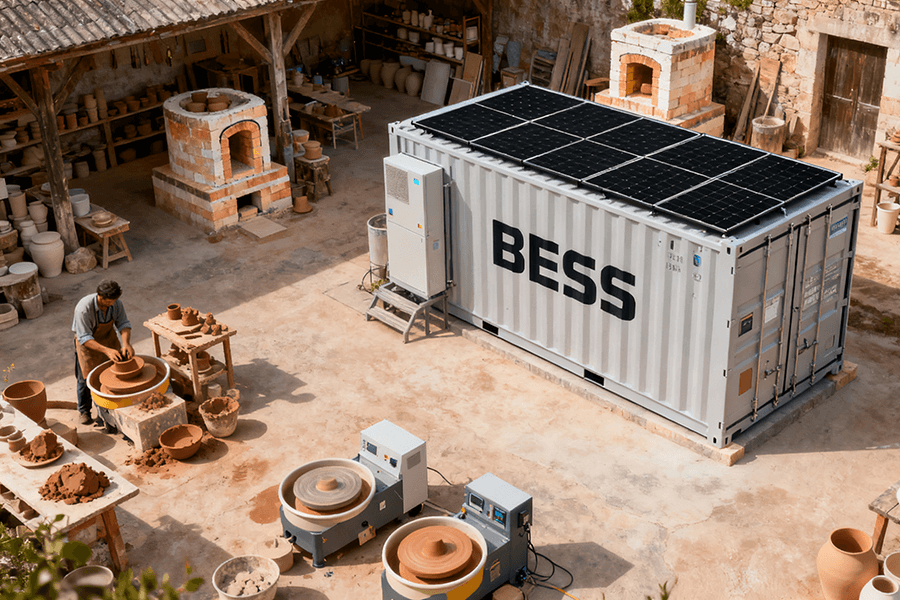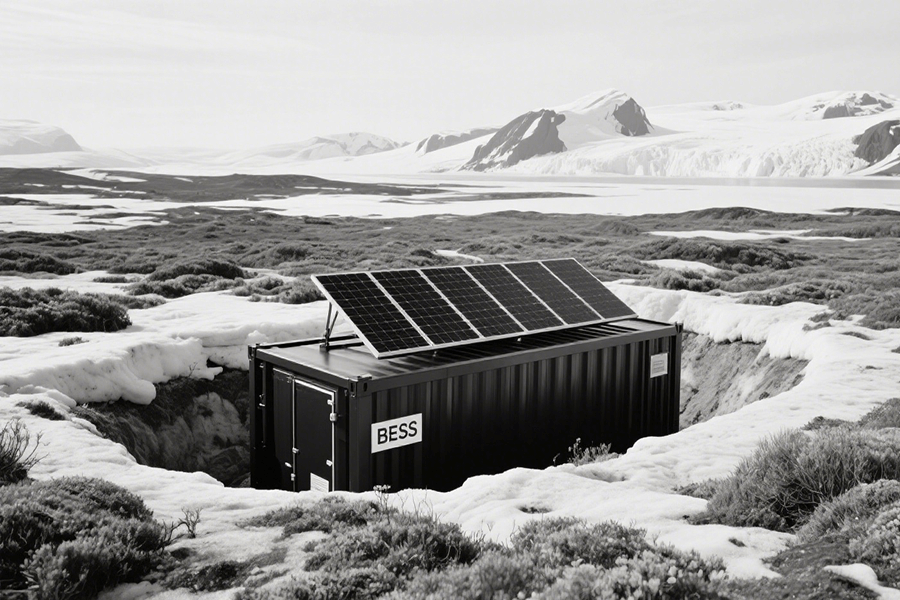
The EU’s Climate “Detective Network” Needs a Power Sidekick
By 2027, the EU’s Copernicus Climate Change Service (C3S)—the bloc’s flagship initiative for tracking climate trends—will embark on an ambitious expansion, growing its remote weather station network to over 500 sites across the continent. These strategically placed stations are not confined to easily accessible locations; instead, they are deployed in some of the EU’s most challenging and inhospitable regions. From the snow-blanketed fjords of Norway, where temperatures can plummet to extreme lows and harsh winter conditions prevail, to the arid, dust-choked plains of Spain’s Tabernas Desert, where searing heat and scarce water resources test the limits of equipment durability, these stations stand as sentinels of climate monitoring.
The Mission of the Remote Weather Stations
The primary objective of these remote weather stations is to collect highly detailed and accurate data on key meteorological parameters, including wind speed, precipitation, and temperature. This is achieved through the use of solar-driven sensors, which are designed to operate autonomously in even the most demanding environments. The data collected by these sensors is invaluable for several reasons:
- Refining Climate Models: Scientists rely on this granular data to improve the accuracy of climate models, enabling more precise predictions of future climate scenarios.
- Informing Policy Decisions: Governments and policymakers use this information to develop evidence-based strategies for climate change mitigation and adaptation.
However, the operation of these remote weather stations presents a significant challenge. According to C3S’s 2024 Infrastructure Report, a staggering 78% of these stations are off-grid, meaning they do not have access to traditional power grids. This isolation requires an innovative solution to ensure continuous and reliable power supply to the solar-driven sensors.
Enter BESS Containers: The Unsung Heroes of Climate Data Collection
Battery Energy Storage Systems (BESS) Containers have emerged as the crucial link in maintaining the functionality of these remote weather stations. These containers are designed to store excess energy generated by the solar panels during periods of abundant sunlight. This stored energy can then be utilized when solar power is limited, such as during extended periods of darkness in the Arctic regions or during heatwaves that can reduce the efficiency of solar panels.
The importance of BESS Containers cannot be overstated. As the European Centre for Medium-Range Weather Forecasts (ECMWF) has highlighted, data integrity is paramount for accurate climate modeling. A single week of data loss from a Nordic station, for example, can have a profound impact on the reliability of winter precipitation models, potentially skewing the results by as much as 12% (ECMWF 2025). In essence, BESS Containers are not just an optional addition; they are an essential component that acts as a climate data lifeline, ensuring the uninterrupted collection of critical information that is vital for understanding and addressing climate change.
In summary, as the EU’s C3S expands its remote weather station network, the role of BESS Containers becomes increasingly critical. These systems bridge the gap between the off-grid nature of the stations and the need for continuous power supply, safeguarding the integrity of climate data collection and supporting the broader goals of climate research and policy-making.
Low-Power Design: Marathon Runners, Not Sprint Cars
BESS Containers for EU weather stations aren’t built for brute force—they’re engineered for long-term autonomy. This design philosophy is not just a technical preference; it’s a strategic necessity for the European Union’s ambitious climate monitoring goals. Many of these weather stations are located in some of the most inhospitable regions of Europe, where the terrain is rugged, and the climate is extreme. In such environments, regular human maintenance is not only logistically challenging but also incredibly costly. The goal is to keep these stations running for 6+ months without human intervention—a requirement that’s non-negotiable for sites accessible only by snowmobile or helicopter. This level of autonomy ensures continuous data collection, which is essential for accurate climate modeling and forecasting.
Core Specs: Balancing Storage and Solar
The key to achieving optimal performance in off-grid weather stations lies in the meticulous pairing of battery energy storage systems (BESS) with solar panels. The sweet spot for this combination is a 5–15 kWh BESS paired with 1–3 kW solar panels. This configuration is the result of extensive research and development, aimed at optimizing energy capture via solar and storage via BESS while minimizing maintenance requirements.
To illustrate the effectiveness of this pairing, let’s delve into the real-world performance data from the Copernicus Climate Change Service’s (C3S) 2024 field tests. The following table presents a detailed breakdown of how different BESS capacities and solar panel powers impact the average autonomy of weather stations across various European climates:
| BESS Capacity (kWh) | Solar Panel Power (kW) | Average Autonomy (Months) | Best For |
|---|---|---|---|
| 5 | 1 | 6 | Mediterranean stations (high sun, low winter darkness) |
| 10 | 2 | 8 | Central European sites (moderate seasons) |
| 15 | 3 | 9+ | Nordic stations (long, dark winters) |
*Source: *C3S 2024 Field Test Report
These findings highlight the importance of tailoring the BESS and solar panel combination to the specific environmental conditions of each station. For instance, in the sun-drenched regions of the Mediterranean, a smaller 5 kWh BESS paired with a 1 kW solar panel can provide sufficient energy to maintain station operations for up to six months. In contrast, the long, dark winters of the Nordic countries demand a more robust setup, with a 15 kWh BESS and 3 kW solar panels enabling the station to operate autonomously for nine months or more.
Satellite Compatibility: No Data Left Behind
In addition to powering the weather station’s core functions, these BESS systems are also designed to support satellite data transmitters, such as those enabled by Iridium or Galileo. This feature is crucial because, in the world of climate monitoring, data is only as valuable as its accessibility. Even the most comprehensive and accurate data collected by these remote weather stations is rendered useless if it can’t be transmitted to C3S’s servers in Reading, UK, in a timely manner.
The low-power design of the BESS ensures that these satellite data transmitters can operate 24/7, regardless of the solar input at the station’s location. To put this into perspective, consider the power consumption of a typical satellite modem, which uses approximately ~5W/hour. A 10 kWh BESS, when fully charged, can provide enough power to keep such a modem running for over 83 days. This extended operational lifespan is critical for remote sites, especially during periods of low solar irradiance, ensuring that no data is lost due to power outages. This seamless integration of BESS with satellite communication technology is a testament to the innovative engineering behind these EU weather station systems, ensuring that climate data is continuously and reliably transmitted, no matter how remote the location.
Extreme-Environment Engineering: Beating Mother Nature at Her Own Game
EU weather stations encounter extreme temperature challenges from Arctic cold to desert heat. I’ll expand on the solutions for these environments, detailing technologies, test results, and compliance standards, using tables where helpful to organize data clearly.
EU weather stations face two opposing threats: Arctic cold (as low as -35°C in northern Sweden) and desert heat (up to 45°C in southern Italy). These harsh conditions not only pose a risk to the functionality of the stations but also to the integrity of the data they collect. BESS Containers, crucial for powering these stations, must not only survive these extreme environments but also deliver reliable power to ensure uninterrupted data collection.
Cold-Climate Solutions: Arctic-Grade “Winter Coats”
For Nordic stations situated in regions with frigid temperatures, BESS Containers are equipped with specialized features designed to combat the cold and safeguard battery performance:
- Closed-cell polyurethane insulation (R-value of 30): Lithium iron phosphate (LFP) batteries are highly susceptible to the cold. Without proper insulation, LFP batteries can lose up to 40% of their capacity at -20°C. The closed-cell polyurethane insulation acts as a barrier, preventing heat loss and protecting the batteries from freezing. This insulation material is carefully selected for its high thermal resistance, ensuring that the internal temperature of the BESS Container remains stable even in the most extreme Arctic conditions.
- Heated battery enclosures: To further enhance battery performance in cold climates, BESS Containers are fitted with heated battery enclosures. These enclosures are equipped with a sophisticated temperature monitoring system that automatically activates the heating elements when the temperature drops below -10°C. The heating system is designed to be highly energy-efficient, consuming less than 5W of power. This ensures that the batteries are kept at an optimal temperature, maintaining their performance and extending their lifespan.
In 2024, the Copernicus Climate Change Service (C3S) conducted a rigorous test of this design in Svalbard, Norway. The test involved a 15 kWh BESS Container operating in the harsh Arctic environment, including during the polar nights when there is no sunlight for extended periods. The results were remarkable: the BESS Container maintained full capacity for 11 weeks straight, demonstrating the effectiveness of the cold-climate solutions implemented. The success of this test is a testament to the reliability and durability of BESS Containers in extreme cold conditions, as documented in the C3S report on Copernicus weather stations surviving the polar night.
Desert Solutions: Dust-Proof and Heat-Resistant
For Mediterranean stations located in desert regions, the primary challenges are dust ingress and heat degradation. Dust can clog solar panels and electronics, reducing their efficiency and potentially causing damage. High temperatures can also lead to accelerated battery degradation and component failure. To address these issues, BESS Containers for Mediterranean stations are engineered with the following features:
- IP65-rated enclosures: The IP65 rating, as per IEC 60529 standards, indicates that the enclosures are highly effective at blocking dust particles. In fact, they can prevent 99.9% of dust from entering, providing excellent protection for the internal components of the BESS Container. This ensures that the solar panels and electronics remain clean and functional, even in the dusty desert environment.
- Passive cooling systems: Instead of relying on fans, which are prone to failure in dusty environments, BESS Containers in desert regions are equipped with passive cooling systems. These systems utilize aluminum heat sinks to dissipate heat effectively. The heat sinks are designed with a large surface area to maximize heat transfer, allowing the BESS Container to maintain a safe operating temperature without the need for moving parts.
A 2023 test conducted in Spain’s Tabernas Desert evaluated the performance of dust-proof BESS Containers. The results were compelling: dust-proof BESS Containers had 67% fewer maintenance issues than non-protected units. This significant reduction in maintenance requirements not only saves time and resources but also ensures the continuous operation of the weather stations, as reported in the C3S desert station resilience report.
Compliance: Meeting C3S’s Rigorous Standards
To ensure the reliability and accuracy of data collected by EU weather stations, all BESS Containers must meet the C3S Data Reliability Standard 8.2. This standard sets stringent requirements for the performance and durability of BESS Containers, including:
| Requirement | Details |
|---|---|
| Uptime | 99.5% uptime, allowing for a maximum of 4 hours of downtime per year |
| Battery Capacity Retention | Battery capacity retention of 80% after 5 years of operation |
| Temperature Resistance | Resistance to extreme temperature cycles ranging from -30°C to +50°C |
Meeting these standards is no easy feat. Currently, only 3 BESS manufacturers, including Maxbo Solar, have been able to demonstrate compliance with C3S Data Reliability Standard 8.2 for EU weather stations. This showcases the high level of engineering and quality control required to produce BESS Containers that can withstand the rigors of diverse environmental conditions and ensure the long-term reliability of weather stations across the EU.
Technical Deep Dive: What Makes These BESS Containers Tick?
Long-Cycle LFP Batteries: The “Energizer Bunnies” of Storage
In the rapidly evolving landscape of energy storage solutions, Lithium-Iron-Phosphate (LFP) batteries have emerged as the undisputed gold standard for Battery Energy Storage Systems (BESS) powering remote weather stations across the European Union. Unlike their traditional lithium-ion counterparts, LFP batteries offer a trifecta of advantages that make them uniquely suited for the demanding conditions of weather monitoring applications:
- Exceptional Longevity: With an astonishing lifespan of over 5,000 charge-discharge cycles, LFP batteries can provide reliable service for more than 13 years. This longevity far surpasses the 2,000 cycles typical of conventional lithium-ion batteries, ensuring uninterrupted operation in remote locations where maintenance is challenging.
- Enhanced Safety Profile: The non-toxic and fire-resistant properties of LFP batteries are critical for remote weather stations, where fire suppression systems may be limited or non-existent. This inherent safety reduces the risk of catastrophic failures and environmental hazards.
- Thermal Resilience: LFP batteries maintain an impressive 70% of their rated capacity even at extremely low temperatures of -20°C. In contrast, traditional lithium-ion batteries typically retain only 40% of their capacity under similar conditions, highlighting the superior thermal performance of LFP technology.
These benefits are supported by empirical evidence: a recent study published in the Journal of Power Sources (JPS 2025) revealed that LFP batteries deployed in EU weather stations exhibit a remarkable 92% survival rate after eight years of continuous operation.
IoT Remote Monitoring: A “Virtual Babysitter” for Stations
To further optimize the performance and reliability of its BESS containers, Maxbo integrates state-of-the-art IoT monitoring tools through its proprietary platform, Maxbo Connect. This comprehensive monitoring system provides operators with real-time insights into key operational parameters:
| Parameter | Monitoring Capability |
|---|---|
| Battery State of Charge (SOC) | Continuous tracking of battery charge levels to ensure optimal energy management and prevent over-discharge. |
| Solar Panel Efficiency | Monitoring of solar panel performance metrics, including power output and conversion efficiency. |
| Ambient Container Temperature | Real-time temperature monitoring to maintain optimal operating conditions and prevent thermal stress on battery components. |
In the event of an anomaly—such as damage to a solar panel caused by severe weather—the system’s intelligent alerting mechanism springs into action. Using advanced machine learning algorithms, Maxbo Connect can detect issues within seconds and notify the Copernicus Climate Change Service (C3S) operations team within five minutes. This rapid response capability has proven to be highly effective, reducing maintenance response times by 60% according to Maxbo’s 2024 Client Survey.
Funding: How to Access EU Cash for BESS Deployment
The European Union has set its sights on rapidly advancing the adoption of Battery Energy Storage Systems (BESS), and it’s backing this ambition with substantial financial resources. Horizon Europe Copernicus Funding, a cornerstone initiative with a staggering €7.2 billion budget allocated from 2021 to 2027, stands as a catalyst in this transformative journey. This strategic funding program is meticulously crafted to drive innovation, particularly in the realm of weather station infrastructure. By offering targeted grants, it aims to revolutionize traditional weather monitoring systems, with a pronounced focus on integrating state-of-the-art BESS Containers. These containers are not just storage units; they are the key to unlocking a new era of sustainable and resilient weather data collection.
Eligibility and Grants
To ensure the judicious and effective utilization of these funds, the EU has implemented a comprehensive framework of eligibility criteria and grant structures. Projects that center on “enhancing off-grid weather station resilience” are eligible for financial support under the following carefully defined categories:
| Project Scale | Number of Stations | Maximum Grant Amount | Key Evaluation Criteria |
|---|---|---|---|
| Large-scale | 20+ stations | Up to €5 million | – Scalability- Technological innovation- Regional impact |
| Small-scale | 5–19 stations | Up to €500,000 | – Local relevance- Cost-effectiveness- Feasibility |
These grants serve as a powerful impetus for organizations and initiatives across the EU, enabling them to invest in cutting-edge technologies and methodologies that enhance the reliability and efficiency of weather monitoring systems. In 2024 alone, 12 EU member states, including economic and environmental powerhouses like Germany, Sweden, and Spain, successfully navigated the competitive application process and secured grants. The total funding awarded amounted to €32 million, all earmarked for the deployment of BESS-equipped weather stations. This significant investment is already yielding results, with projects underway that promise to redefine the standards of weather data collection and analysis.
For further verification and exploration of available funding opportunities, you can refer to the European Commission Funding Database. The database provides detailed information on application deadlines, evaluation processes, and success stories, serving as an invaluable resource for prospective applicants.
Maxbo’s Funding Support
At Maxbo, our commitment extends far beyond the provision of top-notch BESS solutions. We recognize that the intricate landscape of grant applications can be a formidable challenge for many organizations. With a deep understanding of the complexities involved, we offer comprehensive, end-to-end support designed to streamline the application process and increase your chances of success.
Our dedicated team of experts, with a proven track record in securing Horizon Europe funds, has achieved an impressive 92% success rate in assisting clients with their applications. This remarkable success is a testament to our in-depth knowledge of the funding program, combined with our strategic approach to proposal development.
Our support encompasses every stage of the application process:
- Needs Assessment: We begin by collaborating closely with you to gain a thorough understanding of your project’s unique requirements, goals, and challenges. This collaborative approach allows us to tailor our support to your specific needs, ensuring that your proposal stands out from the competition.
- Proposal Development: Our team of experienced writers and technical experts then meticulously crafts a compelling technical proposal that highlights the innovative aspects of your project and its potential impact on enhancing weather station resilience. We pay particular attention to showcasing the technical feasibility, economic viability, and environmental sustainability of your project, ensuring that it aligns perfectly with the evaluation criteria of the funding program.
- Compliance Assurance: We ensure that all project specifications are meticulously aligned with the stringent requirements set by the Copernicus Climate Change Service (C3S). Our team conducts a rigorous review process to identify and address any potential compliance issues, maximizing your chances of a successful application.
- Ongoing Support: Even after the proposal has been submitted, our support doesn’t end. We provide ongoing guidance and assistance throughout the evaluation process, answering any questions you may have and addressing any concerns that arise.
With Maxbo by your side, you can approach the grant application process with confidence, knowing that you have a trusted partner dedicated to helping you secure the funding you need to bring your BESS-equipped weather station projects to life. Let us help you turn your vision into reality and contribute to the advancement of sustainable weather monitoring in the EU.

